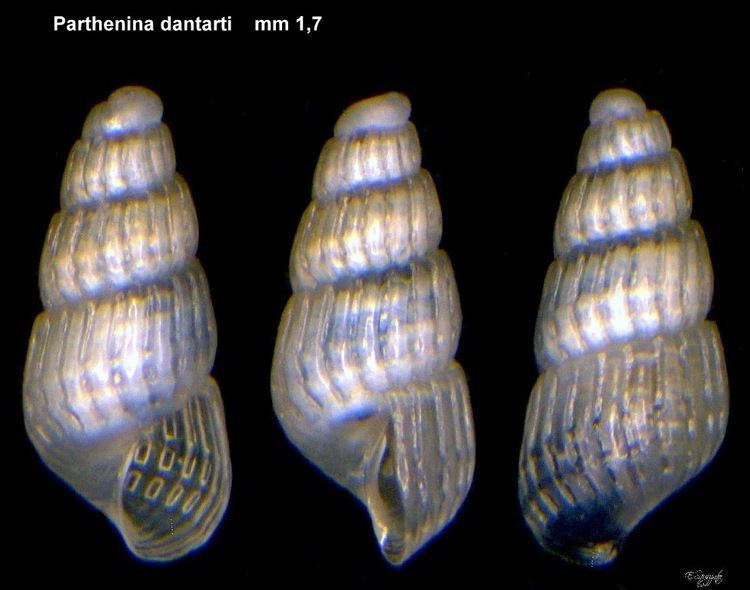Clade Euthyneura Rank Genus | Clade Heterobranchia | |
 | ||
Similar | ||
Parthenina is a genus of very small sea snails, pyramidellid gastropod mollusks or micromollusks.
Contents
This genus is currently placed in the subfamily Chrysallidinae of the family Odostomiidae. The name Parthenia was created by Lowe in 1840 for the species in this group, but had to be replaced since it was preoccupied by a name for a group of dipterans described by Roubineau-Desvoidy in 1830.
Shell description
In the original description Bucquoy, Dautzenberg & Dollfus (1833) states (in English translation) that Partnenina is a type of Odostomia with a mesh-like surface or with longitudinal ridges. Between these ridges there are series of spiral ridges. Many of the European species in the genus have for a long time been wrongly placed in the genus Chrysallida, but Schander et al. (2003) showed that they should indeed be placed in the genus Parthenina. This separation was followed by Pimenta et al. (2009) for Brazilian species.
The synonymy with Besla Dall & Bartsch, 1904 proposed by Micali et al. (2012) is debatable. The type species of Besla has a protoconch axis at 90° with that of teleoconch ("type A protoconch") whereas that of Parthenina is tilted nearly 180° ("type C"); this important character suggests that they are unrelated and that their teleoconch sculpture may be convergent
Taxonomy
The Eastern Atlantic and Mediterranean species of the family Pyramidellidae, here listed under the genus Parthenina Bucquoy, Dautzenberg & Dollfus, 1883, have been included by most 20th-century European authors in the genus Chrysallida Carpenter, 1856, following a lead by Winckworth (1932). The first explicit statement that this is incorrect was voiced by van Aartsen, Gittenberger & Goud (2000: 21) "None of the many species from European Atlantic and Mediterranean waters currently included in Chrysallida conforms exactly to the description of the genus sensu stricto", but they still used Chrysallida as a genus and used Parthenina and other names as subgenera. Micali, Nofroni & Perna (2012) formally raised Parthenina to the rank of genus and included a number of European species, whereas other congeners not treated in that paper were still listed in WoRMS and elsewhere as Chrysallida. Hoisaeter (2014) transferred some more species but still listed five species under Chrysallida. The current treatment follows Giannuzzi-Savelli, Pusateri, Micali, Nofroni & Bartolini (2014) who provided a quite sensible treatment and transferred the relevant Mediterranean species to Parthenina and other genera, without any species retained in Chrysallida. This scheme yet has to be tested against a phylogenetic hypothesis based on molecular sequence data.
Life history
The genus is parasitic, manly on serpulid polychaete worms. They are known to have spermatophores.
Species
Species within the genus Parthenina include:
